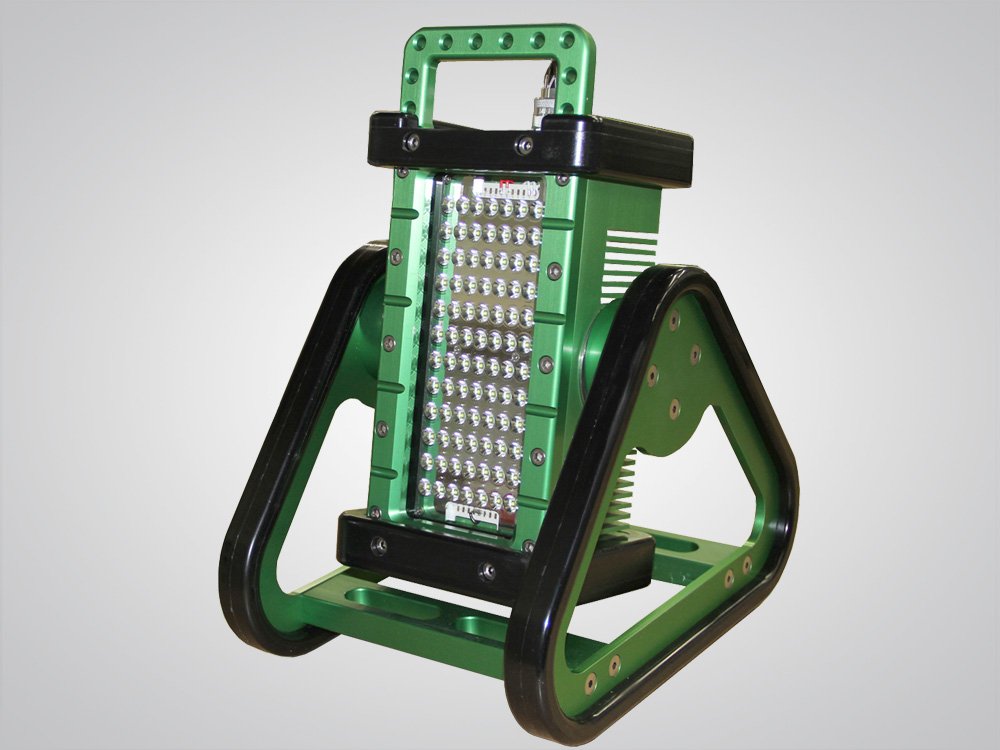Introduction
Explosion-proof portable lights are lighting fixtures specifically designed to be utilized in hazardous areas where flammable vapours, gases, or dust are present. They do not allow any opening to facilitate sparks’ travel out and ignite in hazardous environments.
This guide will contain product suggestions, what to look for in terms of must-have features, buying tips, and questions and answers to help you make an informed decision when purchasing explosion-proof portable lights.
What Are Explosion-Proof Portable Lights?
Explosion-proof headlights are designed to be used safely in explosive environments, including oil rigs, mines, chemical factories, or other places where explosion hazards are present. The lights eliminate sparks that can ignite explosive substances in the environment.
These lights have sealed bodies and are constructed using non-sparking materials that prevent them from emitting any electrical or mechanical sparks. Their design also prevents any explosions inside the light from spreading to the outside environment if they happen inside the light.
Key Features to Look for When Buying
Explosion-Proof Certifications
Find a light with certificates such as ATEX, IECEx, or UL to ensure it is verified in hazardous environments. These verify that the light is tested thoroughly and will not produce sparks or ignition sources. Make sure to obtain the proper type of light and certification in your particular hazardous area.
Battery Life & Power Source
Portable explosion-proof lamps tend to run for long periods in the field. Select lamps with longer battery life and power sources, such as rechargeable lithium batteries, that will withstand the demands of your working conditions. The greater the battery life, the longer your light will run before it requires recharging, which is critical to ongoing safety.
Brightness & Beam Distance
Brightness and beam distance also matter for providing sufficient light in dark or vast spaces. Lights with higher luminosity provide more light, while adequate beam distance allows you to see better in wider spaces or more difficult situations. When choosing lights, ensure they provide enough brightness for your own needs but not at the risk of safety.
Durability & IP Rating
Explosion-proof lighting has to be hard enough to resist harsh, hazardous conditions. Examine the light’s IP (Ingress Protection) rating to determine how dust-, waterproof, and resistant to shock it is. A high rating, e.g., IP67 or IP68, means it can resist more adverse conditions, so the light will be more trustworthy and will have a longer operational life under severe conditions.
Portability & Hands-Free Options
Hands-free and portability are crucial when selecting explosion-proof lights. The portable lights are designed to be lightweight and compact so that workers can easily carry them to hazardous areas. Conveniences include handles, straps, or sturdy cases.
Types of Explosion-Proof Portable Lights
Explosion-Proof Flashlights
Lightweight, compact, and yet explosion-proof flashlights are well suited to confined spaces with one light source. With their sealed housing, these flashlights are explosion-proof, so no sparks are produced while in operation, and many have rechargeable batteries. Their most common use is in hazardous areas for inspection and emergency jobs.
Explosion-Proof Work Lights
These are larger, high-power lights that illuminate a larger surface. They are heavy-duty, typically having metal or impact-resistant cases, and may have adjustable stands or hooks for installation. Work lights are offered in battery-powered and AC-powered models and are appropriate for illuminating work areas in dangerous areas.
Explosion-Proof Headlamps
Designed to be worn on the head, headlamps provide hands-free illumination. They are light, small, and have adjustable straps, ideal for workers who need mobility. Headlamps are used for work requiring light and hands.
Explosion-Proof Lanterns
These provide 360-degree lighting and are best suited for illuminating large spaces or open areas. Explosion-proof lanterns are typically portable with rugged, weather-resistant casings. The lanterns have rechargeable batteries and are best for hazardous outdoor environments.
Safety Tips for Using Explosion-Proof Portable Light
- Verify Certifications: The light must be certified with ATEX, IECEx, or UL, which ensures that the light has been thoroughly tested to provide safety.
- Verify Before Use: Do a quick inspection to see if the light’s casing or lens has any visible cracks, damage, or wear.
- Handle with Care: Never drop or expose the light to knocks.
- Use Appropriate Power Sources: Use only the specified recommended battery or power source provided by the manufacturer.
- Do Not Expose Lights to Harsh Conditions: Avoid exposing the light to high temperature, moisture, or chemicals in the ambient environment that may interfere with its performance.
- Shut Down When Unused: To save battery life and avoid unnecessary wear, switch off the light when not in use, particularly in dangerous environments where even a tiny amount of heat may be harmful.
- Regular Maintenance: Keep the light occasionally, such as cleaning and inspecting for damage.
Conclusion
Explosion-proof flashlights prove useful in safety challenges. Designed to minimize the risks of sparking and ignition, it offers light and protection in hazardous situations such as chemical plants, oil platforms, and mines. The best-rated explosion-proof lights include high-performance LED work lights, steady flashlights, and adjustable headlamps. They all ensure protection, durability, and safety from hazardous conditions, delivering uniform light to your most demanding environments. Settle for nothing less. Buy from our collection of top-selling explosion-proof lights and illuminate your workspace correctly today. Shop Now for lighting with a conscience.
FAQs
What makes a light explosion-proof?
Any light would be explosion-proof if it were designed and constructed to deny any spark, heat, or electrical piece from igniting ignitable vapors, gases, or dust within an explosive mixture.
What is the difference between Class 1 Div 1 and Class 1 Div 2?
Class 1 Div 1 lighting is applied in locations having continuous or frequent flammable vapours or gases. Class 1 Div 2 lighting is used where hazardous conditions are less probable but existent.
Can I use explosion-proof lights in wet conditions?
Yes, many explosion-proof lights are high IP rated (such as IP67 or IP68), meaning that they are moisture-proof and waterproof. Always check the light’s specifications for water resistance.
Are explosion-proof lights expensive?
Explosion-proof lights cost more than standard lights because they have a unique design and safety features. Still, their durability and the protection they offer in dangerous environments make them worth it.
Do LED explosion-proof lights last longer than traditional ones?
Yes, LED explosion-proof lasts longer as they have a longer life span than traditional ones.

